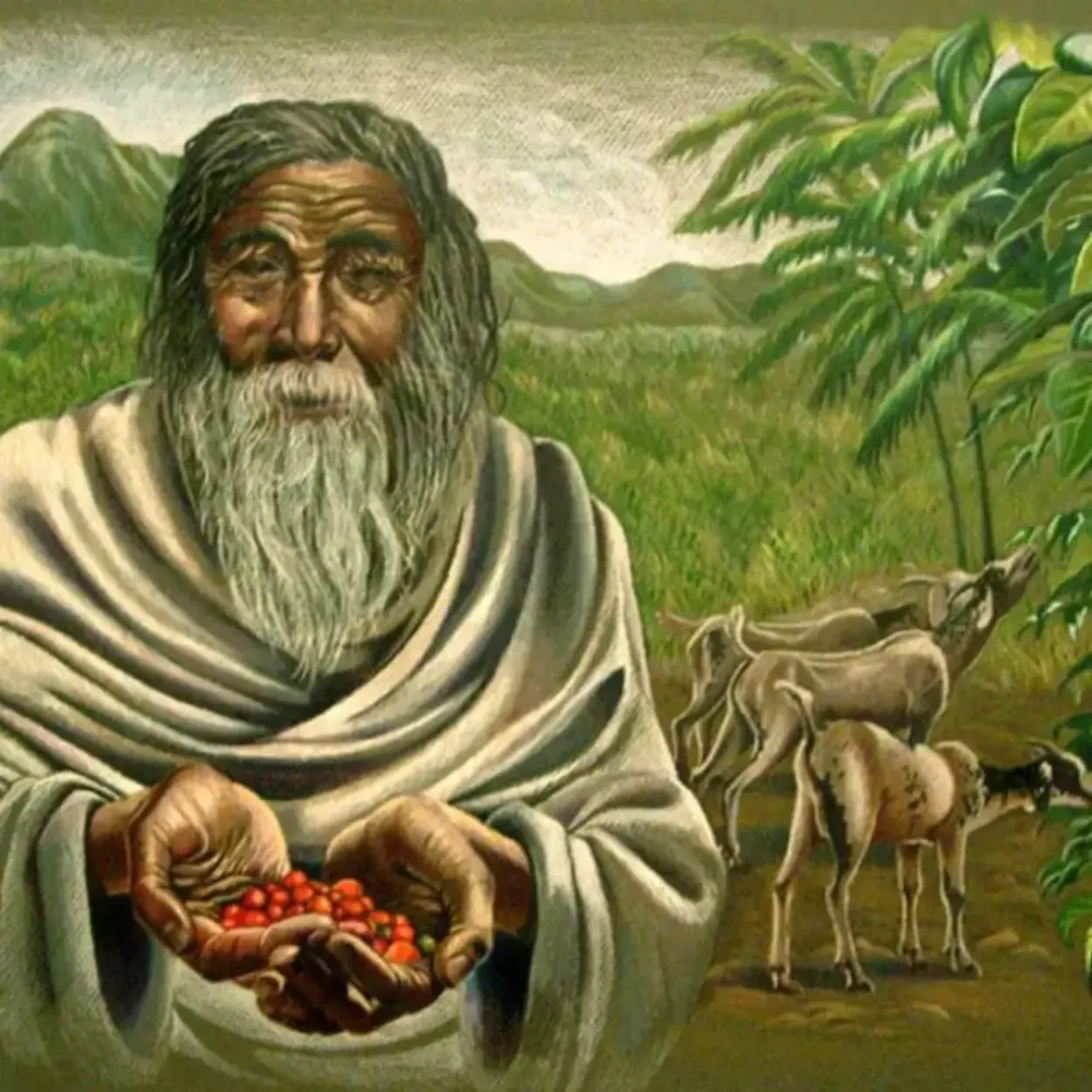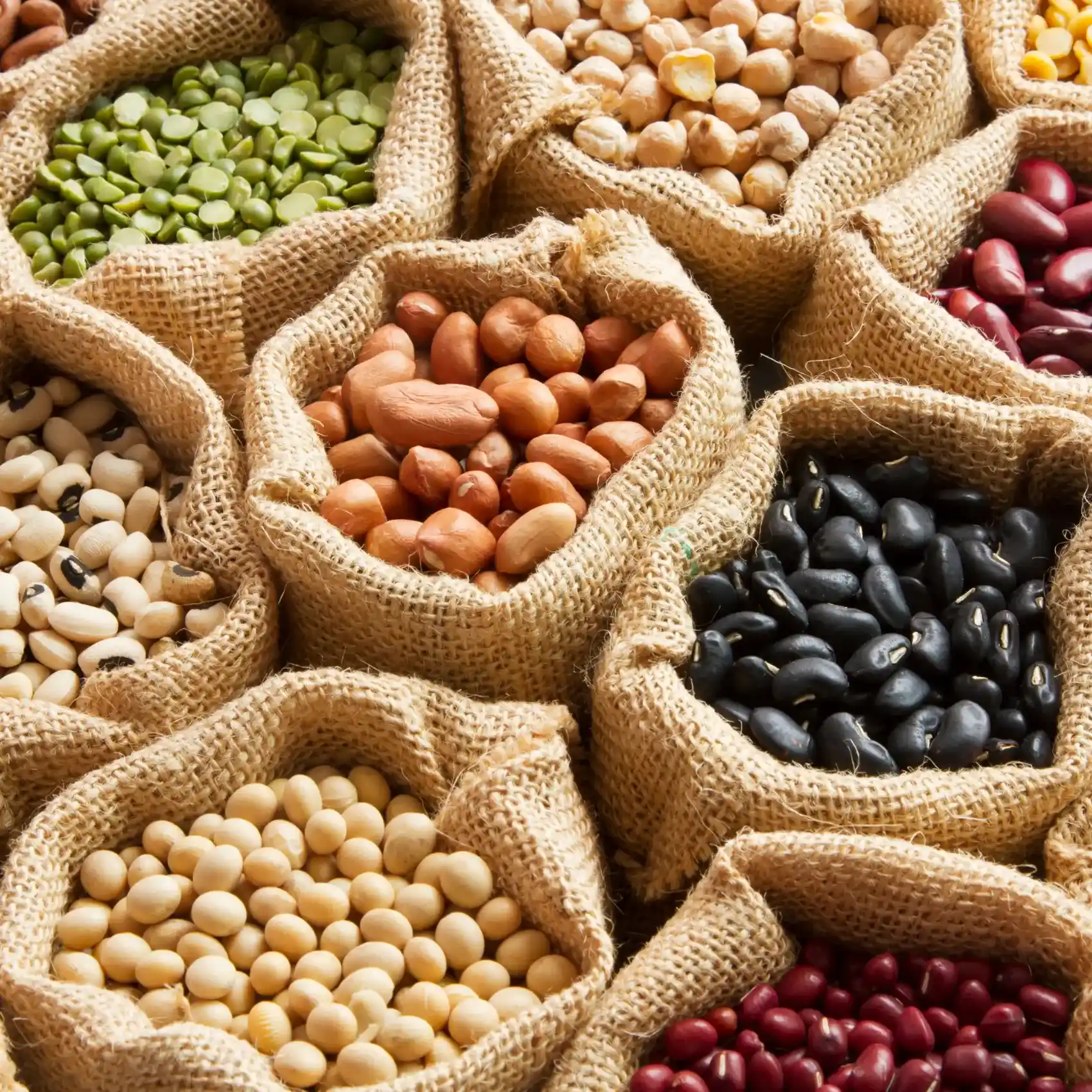Coffee, a beloved beverage enjoyed by millions worldwide, holds a special place not only in our cups but also in the cultural and social fabric of societies across the globe. This article delves into the rich and intricate world of coffee, exploring its cultural significance, varied rituals, and the role it plays in different communities. Amidst its widespread popularity, a common question arises: Are Coffee Beans Legumes? Through this exploration, we will uncover the answer to this query while also journeying through the diverse traditions and contemporary practices surrounding this remarkable drink.
Are Coffee Beans Legumes?
No, coffee beans are not legumes. They are the seeds of the coffee cherry, from the Coffea plant, which belongs to a different botanical family than legumes. Keep reading to know more about the fascinating journey of these beans from their botanical roots to their cultural impact across the globe.
Coffee and Legumes: Key Takeaway
- Botanical Distinction: Coffee beans, originating from the Coffea plant, are botanically distinct from legumes, which belong to the family Fabaceae. This difference is crucial in understanding their respective roles and characteristics in the natural world.
- Nutritional Content: While legumes are known for their high protein and fiber content, coffee beans are valued for their unique flavor profile and caffeine content, playing a different role in dietary habits and preferences.
- Culinary Uses: Legumes serve as a versatile ingredient in a variety of cuisines, offering both nutritional benefits and culinary diversity. In contrast, coffee beans are primarily used for brewing the popular beverage coffee, with their roasting and brewing methods significantly influencing the flavor.
- Cultural Significance: Both coffee and legumes hold significant cultural importance; however, their roles differ vastly. Coffee is often associated with social interactions, rituals, and productivity, while legumes are staple food items in many cultures, valued for their nutritional properties.
- Historical and Geographic Origins: The rich history of coffee, originating in Ethiopia and spreading globally, contrasts with the diverse origins of legumes, which have been cultivated in various parts of the world for thousands of years. This highlights the unique historical journey of coffee, marked by cultural rituals and trade, compared to the widespread, ancient cultivation of legumes across multiple continents.
The Botanical Definition of Legumes
Legumes, a significant and diverse group in the plant kingdom, are renowned for their unique characteristics and important ecological roles. They are essential in various ecosystems and have a profound impact on agriculture due to their distinctive traits and abilities. This exploration delves into the botanical definition of legumes, shedding light on their characteristics, ecological significance, and how they are distinguished from other plant families.
Understanding Legumes in Botany

Legumes, members of the Fabaceae or Leguminosae family, represent a distinct and essential group within the botanical realm. Their significance is highlighted through several key characteristics:
- Family Fabaceae or Leguminosae: This family encompasses a wide variety of plants known for their unique biological features.
- Nitrogen Fixation: Legumes have a symbiotic relationship with bacteria in their root nodules, allowing them to convert atmospheric nitrogen into a form that can be used by plants, enriching the soil. (1)
- Ecological and Agricultural Importance: Their nitrogen-fixing ability makes them essential in maintaining the health of ecosystems and improving agricultural practices.
Common Characteristics of Legumes

Legumes are characterized by several unique features that differentiate them from other plant families:
- Root Nodules: As mentioned above, these structures contain nitrogen-fixing bacteria crucial for the symbiotic relationship that enables nitrogen fixation.
- Fruit Type: Legumes produce a specific type of fruit known as a pod, which is a hallmark of this family. These pods are usually dry and dehisce (split open) upon maturation to release the seeds.
- Leaf Structure: Many legumes exhibit compound leaves, composed of several leaflets, though this can vary across species.
- Diverse Growth Habits: The legume family encompasses a wide range of growth forms, from small herbaceous plants to large trees, showing the diversity within this botanical group.
Botanical Classification of Coffee Plants

Coffee plants, often questioned in relation to legumes, are in fact quite different in their botanical classification:
- Genus Coffea: Coffee plants are part of this genus within the Rubiaceae family. (2)
- Family Rubiaceae: This family is separate from the Fabaceae family, indicating a different set of characteristics and growth patterns.
- Distinction from Legumes: Coffee beans, derived from the genus Coffea, do not meet the botanical criteria to be classified as legumes. They have different structural and biological features compared to those of legumes.
- Misconception Clarification: Confusion often arises due to the bean-like appearance of coffee seeds, but botanically, they are not related to legumes.
To sum up, while coffee beans share certain superficial resemblances with legumes, such as their bean-like appearance, their botanical classification in the Rubiaceae family distinctly separates them from true legumes in the Fabaceae family. Therefore, in response to the question, Are Coffee Beans Legumes? the answer is a clear no, as they belong to an entirely different family in the botanical realm.
A Closer Look at Coffee Plants
The coffee plant, a cornerstone of the global coffee industry, is a subject of profound botanical fascination. This comprehensive examination delves deep into the intricate anatomy of the coffee plant, shedding light on its various species and varieties. Furthermore, it explores the geographical regions where these coffee plants flourish, with a particular focus on their cultivation within the coffee belt.
Coffee Plant Anatomy

The anatomy of a coffee plant reveals the complex structure behind each cup of coffee:
- Root System: Coffee plants have a deep root system that helps in the absorption of nutrients and stability in the soil.
- Stems and Branches: The plant’s stems are sturdy, supporting a dense foliage of leaves and coffee cherries.
- Leaves: Typically, coffee plant leaves are glossy, dark green, and oval-shaped, providing vital photosynthesis for the plant’s growth.
- Flowers: Coffee plants produce small, fragrant white flowers, which are crucial for the development of coffee cherries.
- Coffee Cherries: The fruit of the coffee plant, known as a coffee cherry, contains coffee beans. Each cherry usually contains two beans, enclosed in a husk. (3)
Coffee Varieties and Species

There is a diverse range of coffee varieties and species, each with unique characteristics:
- Arabica (Coffea arabica): Known for its smooth, aromatic flavor, Arabica is the most widely consumed coffee species globally.
- Robusta (Coffea canephora): Robusta beans are more bitter but have a higher caffeine content and are more disease-resistant than Arabica.
- Liberica (Coffea liberica) and Excelsa (Coffea excelsa): These less common species are known for their distinct flavor profiles and are grown in specific regions.
Where Coffee Plants Grow

The growth of coffee plants is predominantly concentrated in the coffee belt, a region ideal for coffee cultivation:
- Coffee Belt: The coffee belt encompasses the equatorial zone between the Tropic of Cancer and the Tropic of Capricorn. This area offers the perfect climate for growing coffee plants.
- Altitude and Climate: While Arabica coffee prefers higher altitudes and milder climates, Robusta thrives in warmer, low-altitude areas.
- Global Distribution: Countries within the coffee belt, including Brazil, Vietnam, Colombia, Indonesia, and Ethiopia, are leading producers, each adding unique flavors to the world’s coffee palate.
The journey of understanding what is a coffee cherry and the coffee plant’s cultivation within the coffee belt opens up a rich narrative. This narrative encompasses the biological complexity of the plant, the diversity of its species, and the geographical nuances of its growth, culminating in the beloved global phenomenon of coffee.
The Origin of Coffee Beans
The history of these beans is as rich and aromatic as the drink itself. Tracing its roots back to ancient civilizations, coffee has journeyed through continents, shaping cultures and economies along its path. This exploration delves into the origins of the best coffee beans, their historical cultivation, and the legends that surround their discovery.
Historical Background of Coffee Cultivation

The cultivation of coffee has a long and storied history:
- Early Beginnings: Coffee cultivation began in ancient Ethiopia, where its beans were initially used not in drinks but in food.
- Spread to the Arab World: By the 15th century, coffee had reached the Arabian Peninsula, where it became an integral part of daily life and culture.
- Expansion to Europe and Beyond: Coffee’s popularity soared in Europe in the 17th century, leading to the establishment of coffee houses and its spread to the Americas and Asia.
Coffee’s Journey from Ethiopia to the World

The journey of coffee from Ethiopia to the rest of the world is a tale of trade, colonization, and cultural exchange:
- Ethiopian Origin: The best coffee beans are believed to have originated in the Ethiopian plateau, offering unique flavors and varieties.
- Trade Routes: Through trade routes, these beans spread from Ethiopia to Yemen and then to the rest of the Middle East, North Africa, and Turkey.
- Global Spread: European travelers and colonists further disseminated coffee cultivation to new lands, including Latin America, Southeast Asia, and the Caribbean, each region developing its unique coffee bean varieties.
Legends and Myths Surrounding Coffee Discovery

The discovery of coffee is shrouded in legends and myths, adding to its mystique:
- Kaldi the Goat Herder: One of the most famous legends is about Kaldi, an Ethiopian goat herder who discovered coffee when he noticed his goats became energetic after eating certain berries.
- Monks and the First Brew: The story continues with Kaldi sharing these berries with a monk, who made a drink from them to stay awake during long prayers, marking the birth of the coffee drink.
- Symbolism and Folklore: Across different cultures, coffee has been surrounded by various other myths and symbolic interpretations, reflecting its impact on societies throughout history.
Overall, the origin of these beans encompasses a journey through time and across continents, from the ancient highlands of Ethiopia to every corner of the globe. Kaldi the goat herder, the best coffee beans, and the myriad legends that surround coffee’s discovery all contribute to the rich tapestry of its history, making coffee much more than just a beverage, but a cultural icon.
Coffee Beans vs. Other Legumes

The comparison between coffee beans and other legumes is an intriguing subject, highlighting significant differences and some surprising similarities. While coffee beans are often colloquially referred to as “beans,” they are actually seeds of the coffee plant’s fruit. This distinction sets the stage for a deeper exploration into how they compare with common legumes in terms of nutritional content and culinary uses.
Comparing Coffee Beans to Common Legumes

Coffee beans differ from common legumes like peas, beans, and lentils in several key aspects:
- Botanical Classification: Unlike common legumes that belong to the family Fabaceae, coffee beans are seeds from the Coffea plant, part of the Rubiaceae family.
- Growth and Harvesting: Coffee beans are harvested from the coffee cherry, the fruit of the coffee plant, while legumes are typically harvested from the pods of leguminous plants.
- Cultural and Economic Importance: While both coffee beans and legumes are globally significant, coffee is primarily valued for its stimulating properties, whereas legumes are staples in diets worldwide due to their high protein content.
Nutritional Differences and Similarities

The similarities between coffee beans and legumes in terms of nutrition are limited to general plant-based characteristics, such as being a source of natural compounds.
- Protein Content: Legumes are renowned for their high protein content, a feature not shared by coffee beans.
- Fiber and Nutrients: Common legumes are rich in dietary fiber and various nutrients, whereas coffee beans are prized for their high antioxidant content, particularly when roasted.
- Caffeine: Coffee beans uniquely contain caffeine, a stimulating compound absent in other legumes.
Culinary and Culinary Uses

The culinary uses of coffee beans and legumes diverge, reflecting their distinctive properties and cultural roles:
- Coffee Beans: Primarily used for making coffee, a globally popular beverage, these beans are also used in flavoring desserts, beverages, and some savory dishes.
- Legumes: Legumes are versatile in the culinary world, used in a wide range of dishes from soups and stews to salads and side dishes. They are often a key protein source in vegetarian and vegan diets.
In summary, while coffee beans share the common name of “beans” with legumes, they are distinct in many ways, from their botanical classification and nutritional profiles to their diverse culinary applications. This comparison sheds light on the unique qualities of coffee beans, setting them apart from the leguminous family members.
The Cultural Significance of Coffee
Coffee is not just a beverage; it’s a cultural phenomenon that has influenced societies around the world. Its role extends beyond the mere act of consumption, intertwining with various cultural practices, rituals, and contemporary societal norms.
Coffee’s Role in Different Cultures

The role of coffee in different cultures highlights its versatility and symbolic significance:
- Middle Eastern Traditions: In Middle Eastern cultures, coffee is often associated with hospitality and social gatherings, serving as a symbol of warmth and generosity.
- European Coffee Houses: In Europe, coffee houses have historically been centers of intellectual and social activity, playing a pivotal role in the exchange of ideas and artistic expression.
- Latin American Production and Consumption: In Latin American countries, coffee is not only a major agricultural product but also a staple in daily life, often enjoyed leisurely with family and friends.
Traditions and Coffee Rituals

Coffee rituals and traditions vary greatly across the world, each adding a unique cultural flavor to the coffee experience:
- Ethiopian Coffee Ceremony: This elaborate ritual involves roasting, grinding, and brewing coffee in front of guests, symbolizing respect and community.
- Italian Espresso Culture: In Italy, espresso is an integral part of daily life, often consumed quickly while standing at a bar, reflecting the country’s love for strong, rich coffee.
- Turkish Coffee Readings: In Turkey, coffee is not only a beverage but also a medium for fortune-telling, where patterns in coffee grounds are interpreted after drinking.
Coffee in Contemporary Society

In contemporary society, coffee has evolved into a versatile and ubiquitous presence:
- Third Wave Coffee Movement: This recent trend emphasizes high-quality, artisanal coffee, focusing on the origin, roasting, and brewing techniques.
- Social and Work Culture: Coffee has become synonymous with work and productivity, often being a staple in office environments and a common reason for casual meetings or breaks.
- Global Industry and Sustainability: As a global commodity, coffee has prompted discussions around sustainability, ethical sourcing, and fair trade practices, reflecting a growing consciousness among consumers.
Conclusion
the exploration into the world of coffee reveals a fascinating journey that extends far beyond the simple question of Are Coffee Beans Legumes? We have uncovered the distinct botanical nature of coffee beans, their unique nutritional profile, and their specific culinary uses, which set them apart from legumes. Moreover, the rich cultural tapestry and historical significance of coffee, from its Ethiopian origins to its global spread, underscore its unique place in human history and society. This journey through coffee’s past and present not only enhances our understanding of this beloved beverage but also highlights its profound impact on cultures, economies, and environments around the world.
FAQ
How do coffee plants differ from traditional legume plants?
Coffee plants differ from traditional legume plants in their botanical classification, growth habits, and the fact that their seeds are part of a fruit (coffee cherry), unlike legumes which are seeds within pods.
What is the historical origin of coffee beans?
The historical origin of coffee beans traces back to Ethiopia, where it was first discovered and later spread to the Arabian Peninsula and subsequently around the world.
What are the nutritional differences between coffee beans and other legumes?
Coffee beans are rich in antioxidants and caffeine but low in protein and fiber, unlike other legumes which are high in protein, fiber, and various nutrients but lack caffeine.
How has coffee influenced different cultures throughout history?
Coffee has significantly influenced different cultures through its role in social interactions, the establishment of coffee houses as centers for intellectual and social exchange, and as a symbol of hospitality in various cultures.














